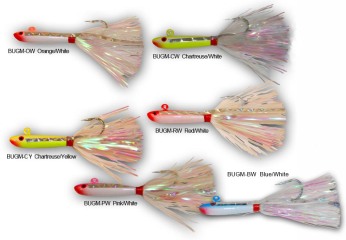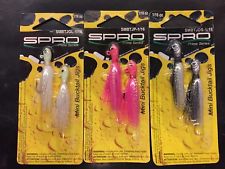Late in the summer, usually August but sometimes as early as late July, mahi mahi arrive close to shore off the coast of New York, Massachusetts and other New England states. These fish are usually left alone as anglers don’t even realize they have delicious sandwiches within reach of their bay boats. Personally, I have caught mahi out of boats as small as a 13′ whaler. South of Martha’s Vineyard, where I am typically fishing, we get them as close as 5 miles from shore. Now hold on, before you grab your buddies and hop in the boat you have to understand that inshore mahi fishing isn’t as easy as mahi fishing in the canyons. These fish can be picky, annoying and downright frustrating. Before I had “the mahi game” cracked, I spent frustrating hours targeting the green streaks I could see 20 feet from the boat.
Location– First and most importantly, you have to know where to fish. You can typically find mahi in waters upwards of 65 degrees. For your best bet at a thing these fish, target areas that you know hold bait. Mahi are structure oriented fish, so find the structure and you typically find the fish. We almost always find fish under anything a couple square feet or bigger. High flyers are your best bet. We have never found them under balloons before. If they aren’t at the first flyer you pull up to, don’t worry. Sometimes it takes 10 buoys before we find one loaded with them. Usually, we target waters 6-10 miles off land.
Lures– I have had days where we throw absolutely everything at mahi. Ballyhoo, eels, herring, bluefish chunks, you name it, without a bite. Before I let you in on the best lures in my opinion, I have to talk about bait fish. Usually, these mahi are targeting halfbeaks and sand eels. I have had the most success with natural colors and have found that the most effective lures (for me) have been…

Pictured above: Hogy Epoxy Jig in olive next to a large sand eel. (Source: http://www.fishingreportsnow.com/images/product.reviews.2014/Hogy.Epoxy.Jigs.Sand.Eel.jpg)
The Hogy Epoxy Jig in 7/8oz in blue (to mimic a halfbeak), olive (to mimic a sand eel) and nuclear chicken. On the clearest, most flat days I have had very good luck with the nuclear chicken, a crazy color, for whatever reason.

Pictured above: Bimini Bay Glass Minnow Jigs. (Source: http://www.biminibayoutfitters.com/images/buccaneer/glass_minnow.jpg)
Bimini Bay Glass Minnow Jigs in the blue color. This was my most productive lure in all 2016.

Pictured above: Spro Mini Bucktail Jigs in white, pink and black/white. (Source: http://thumbs.ebaystatic.com/images/g/StoAAOSwOdpX1yFV/s-l225.jpg)
Spro Mini Bucktail Jig (1/16oz) in pink and white. This lure is incredibly light and I found the best success with this lure when the mahi were extremely picky.
Gear: You really don’t need more than two (possibly 3) setups for mahi. As far as rods go, keep it light and you will have far more fun. Don’t underestimate freshwater rods, many of which can catch mahi up to twenty pounds! My first rod is what I am holding when we pull up to a flyer. It is a St Croix 7ft, 6-12lb test, 1/4-5/8 oz. rod paired with a Shimano Stradic 2500 loaded with 15lb braid. For leader I use 15lb Seaguar Blue Label Fluorocarbon. I have found that light leader is, at times, the key to success on tough days.
My second rod is a heavier rod for flyers holding bigger fish. It is also my rod for casting to white marlin that we frequently come across in the same area. On this rod, I use a Fin Nor Lethal 40, a fantastic reel for a very low price with a sweet, smooth drag system, loaded with 40lb braid mainline and 30lb Seaguar Blue Label Fluorocarbon. This reel is on a custom Dick’s Bait and Tackle rod.
The third (optional) rod is a fly rod. I prefer an intermediate line on a 6 to 8 weight rod. For flys, most little clousers are very effective.
Remember, these fish can be very spooky, so if you notice that you’re spooking fish, try to use any wind or current to drift within casting range of them. Good luck this coming summer and enjoy the mahi tacos!
